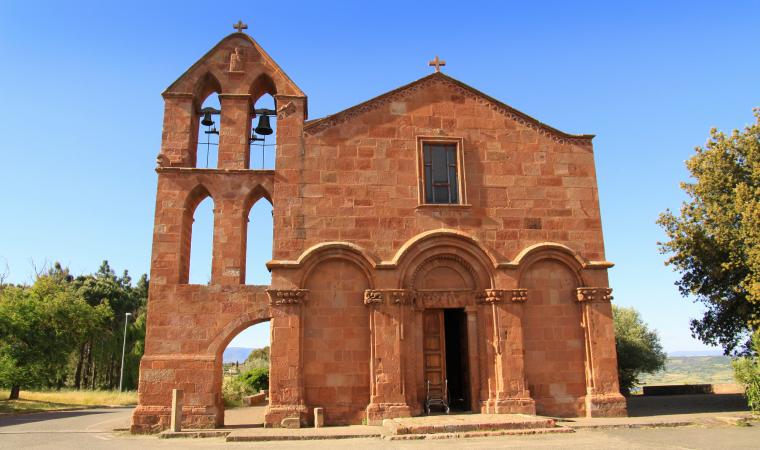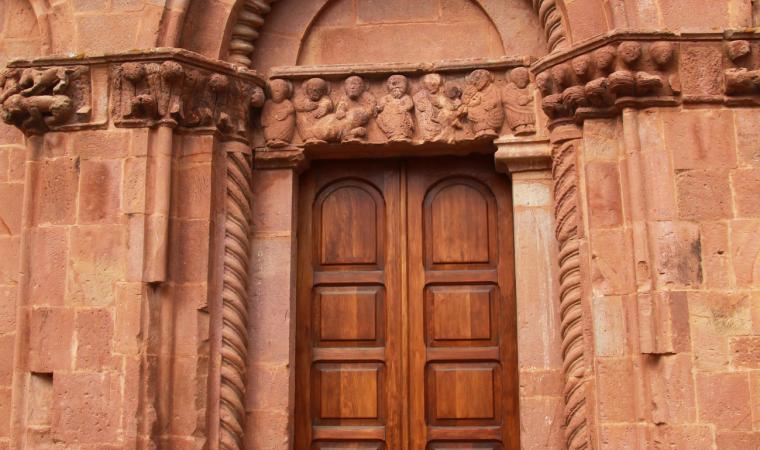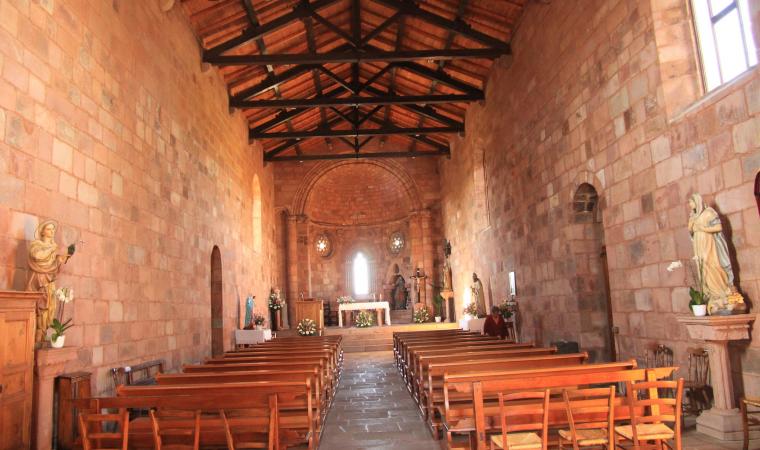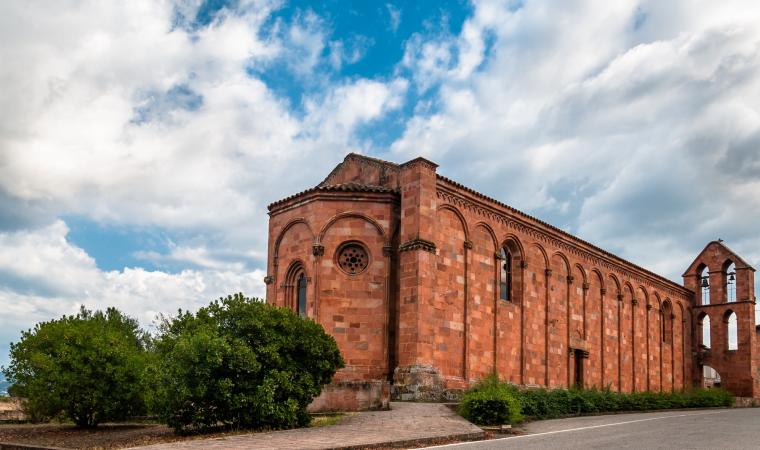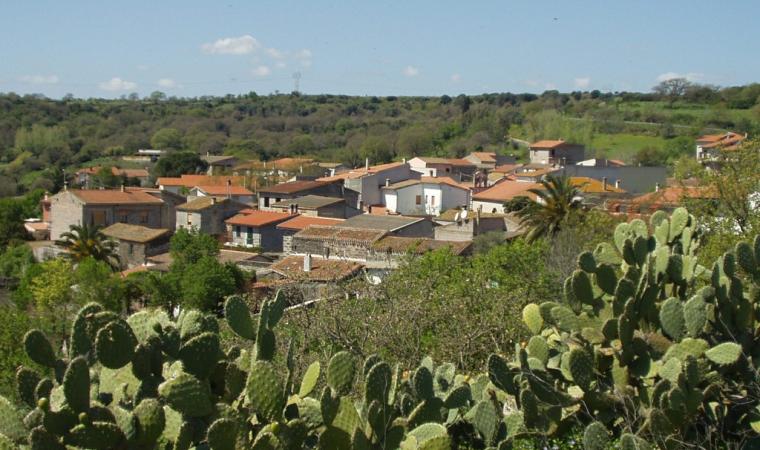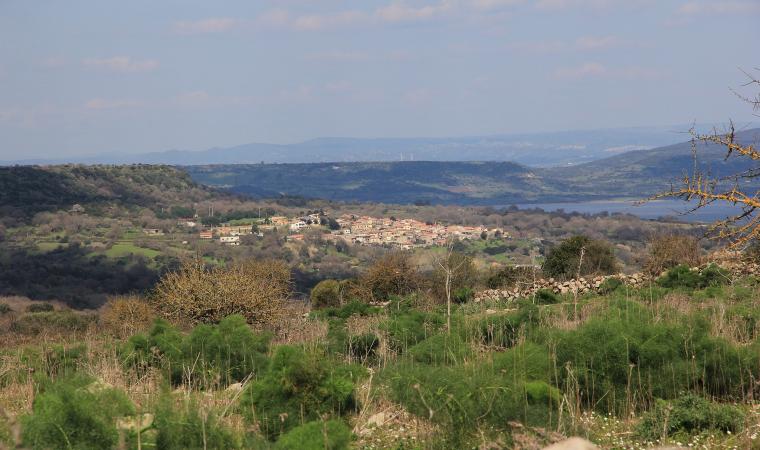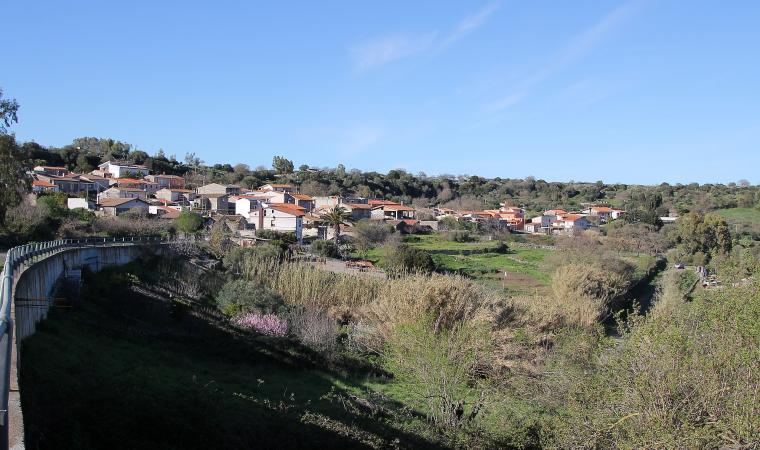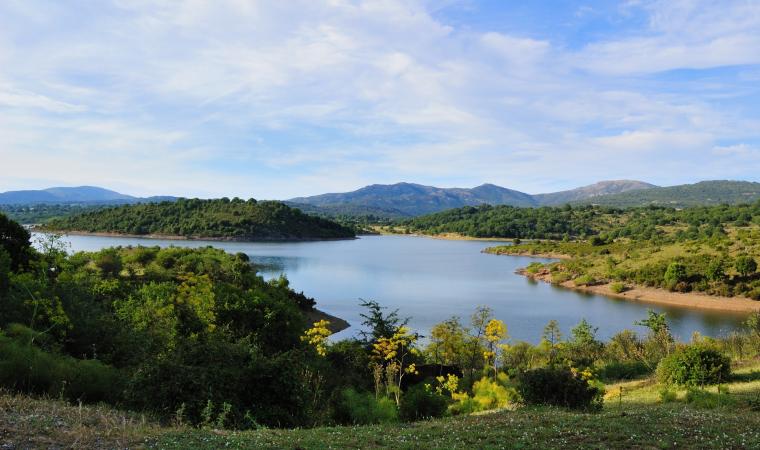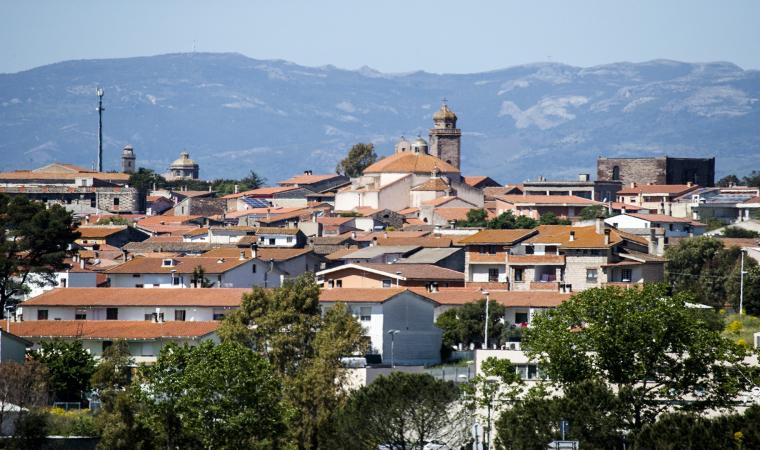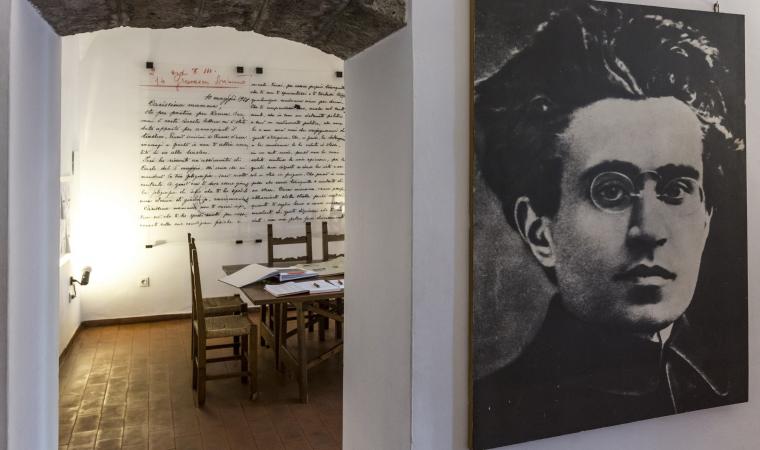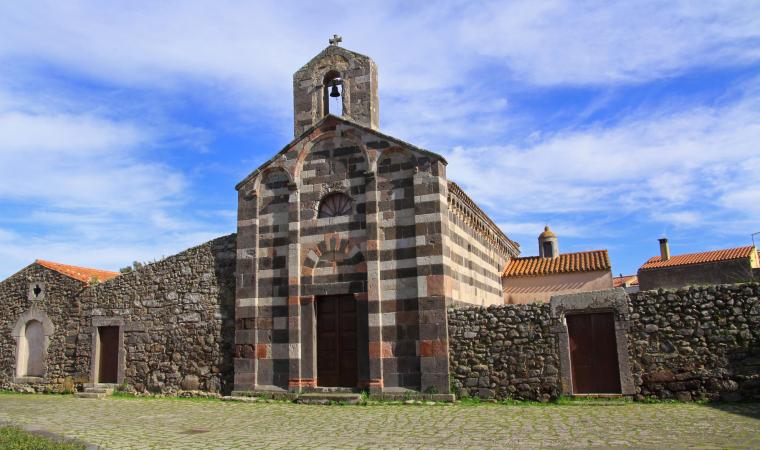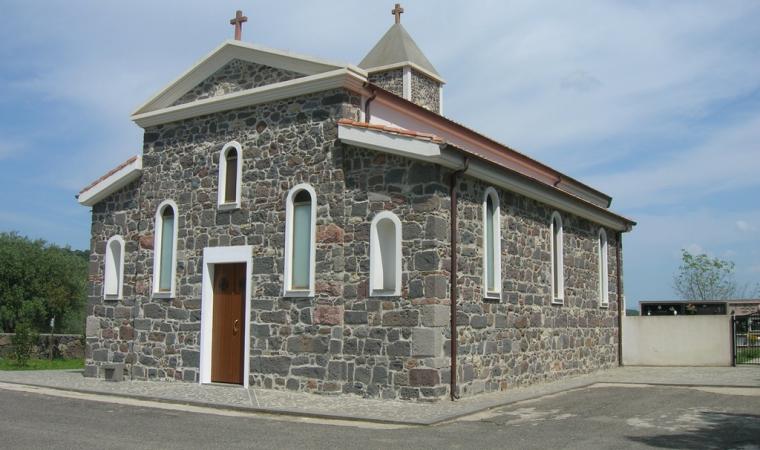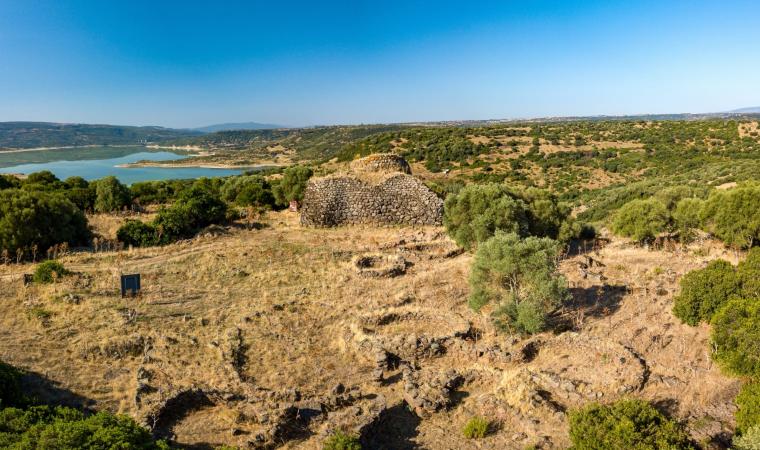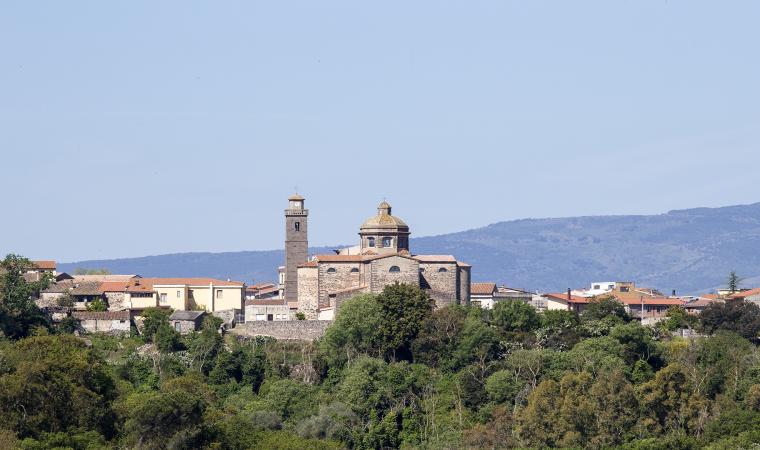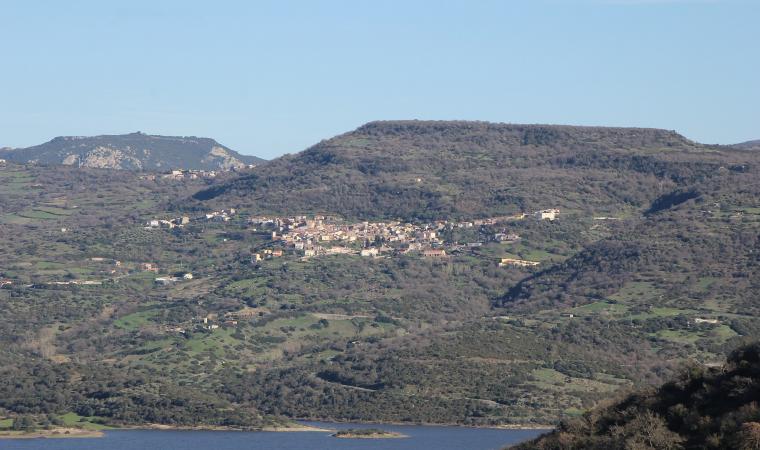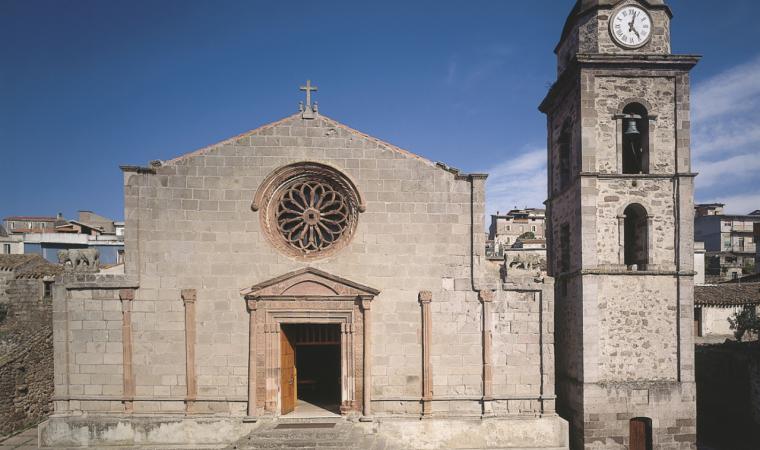It stands superb, with its distinctive red-ochre colour of the volcanic rock from which it was made. You will see its majesty before you, with the great bell gable resting on a single nave structure and rectangular shape. It is the church of San Pietro, located in the village of Zuri, in the district of Ghilarza, in the historical territory of Barigadu. Church and village hide a story within a story, enshrouded by an aura of mystery. They emerged in a place where the most important Sardinian artificial basin, lake Omodeo, was created in 1924, thanks to the barrage of the river Tirso, and now a splendid scenic site to explore by canoe. The sacred building has been taken apart and rebuilt ashlar by ashlar, beyond the lake, along with new village dwellings, while the 'old Zuri' lies beneath the water, except when it reappears in periods of drought.
The lake is a charming background to the church of San Pietro: a feat of engineering and the result of renovation work carried out carefully over the centuries until its greatest renovation that took place in the contemporary period. It all started in the 12th century, which is when it was first built. It may have been created as the chapel of a female Benedictine abbey and was extensively restructured in the 13th century by the abbess, Sardigna de Lacon, as can be read in the epigraph on the façade, on which there is also the date of its consecration: 1291.
However, the church has also had other lives, because it underwent numerous interventions: in 1368 a Gothic-style refurbishment, in 1504 it was remodelled following a collapse and in the 19th century it underwent a further two renovations. The most special moment is linked to the contemporary era: it underwent an 'experiment', which is known as anastylosis in archaeology and architecture, the technique based on which the original elements of a destroyed building are put back together, piece by piece. The church was transferred to avoid being submerged by the basin of the Omodeo river. This is the greatest feat of architectural engineering of the 20th century. The building came back to life after just 28 days, exactly where you can admire it in all its grandeur today.
In the territory of Ghilarza, as well as various pre-Nuragic, Nuragic, Phoenician-Punic, Roman and Byzantine findings, a further two sanctuaries are not to be missed: the church of San Palmerio and the village of San Serafino, characterized by Sas Cumbessias. In the village, don't miss a visit to the Antonio Gramsci house-museum.


